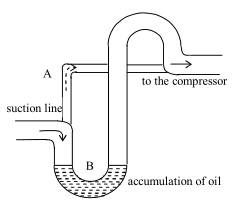A two-ram hydraulic gear consists of a hydraulic ram situated on the port side of the tiller and ano...
ram on the starboard side, linked at their outer ends to the tiller arm by a crosshead and swivel block, the
other ends of the rams working inside their own hydraulic cylinders and pipes connect these cylinders to a
hydraulic pump. The tiller is firmly keyed to the rudder stock. The pump is of special construction and may
be axial or radial design. The pump runs continuously in the same direction driven by an electric motor, and
the position of a movable plate or a floating ring inside the pump controls the suction and discharge of the
oil. When the plate or ring is in mid position, no oil is drawn; when the plate or ring is moved in one
direction from mid position, oil is drawn from one cylinder and discharged into the other; when the plate or
ring is moved in the opposite direction, the suction and discharge of the oil is reversed in direction. The
plate or ring is actuated by a control rod which is attached at its outer end o the hunting gear.
A four-ram hydraulic steering gear may be fitted in large ships for greater steering power, instead of
the tow-ram type. It is simply a double tow-ram unit, so that the force of tow diagonally opposite rams can
act on the tiller to produce double the turning effect.
The pump control is moved by the telemotor through a floating lever. The other end of this lever is
connected through a safety spring link to the rudder stock or tiller. The telemotor is the receiver of the
hydraulic remote control system from wheel on the bridge. The linkage through the floating lever of
telemotor, pump and rudder stock forms the hunting gear.
参考解析:
1. How are the two rams connected?
A. They are linked by pipes and cylinders.
B. They are connected by a crosshead and swivel block.
C. They are held down on both port side and starboard side.
D. They are linked by the rudder stock.
2. Which statement is NOT true about the hydraulic pump for the steer gear?
A. A movable plate is always provided with it.
B. It always runs in the same direction
C. It would start to work immediately after bridge orders change.
D. The discharge flow rate of the pump can be regulated
3. The suction and discharge of the hydraulic pump will be reversed when_____.
A. it change running direction
B. the swash plate moved to the other direction
C. wheel orders are given
D. when the hunting gear is actuated
4. The movement of the house wheel will be directly transferred to ______
A. floating lever
B. the telemotor
C. the control rod of the hydraulic pump
D. safety spring


 百度扫一扫练题
百度扫一扫练题
 关注千题库公众号
关注千题库公众号








